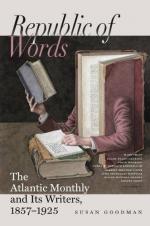It may not have been observed by all that the most interesting periods or situations for rambling are not those which most abound with exciting scenes and objects. There must be a certain dearth of individual objects that draw the attention, intermingled with occasional remarkable or mysterious sights and sounds, to yield an excursion its greatest interest. The hunter (unless he be a purveyor for the market) understands this philosophy, and knows that there is more pleasure in chasing a single deer or a solitary fox over miles of pasture and moorland, than in hunting where these animals are abundant, and slaughtering them as fast as one can load his gun. The pleasures attending a rural excursion in the winter are founded on this fact, and may be explained by this principle. There, amid the general silence, every sound attracts attention and is accompanied by its echo; and since the trees and shrubs have lost their leafy garniture, every tree and other object has its own distinct shadow, and we fix our attention more easily upon anything that excites our interest than when it is distracted by the confusion of numbers.
Hence it is in the winter that the picturesque character of the flight of birds is particularly noticeable. In summer, and in autumn, before the fall of the leaf, birds are partially concealed by the foliage of trees, so that the manner of their flight does not become so readily apparent. But in winter, if we start a flock of birds from the ground, we can hardly avoid taking notice of all the peculiarities of their movements. I have alluded to the descent of Snow-Buntings upon the landscape as singularly picturesque; but the motions of a flock of Quails, when suddenly aroused from a thicket, are not less so. When a Pigeon, or any other bird with strong and large wings, takes flight, the motions of its wings are not vibratory, and its progress through the air is so rapid as to injure the pleasing effect of its motions, because we obtain no distinct perception of the bird during its flight. It is quite otherwise with the Quail. The body of this bird is plump and heavy, and his wings are short, and have a peculiar concavity of the under surface when expanded; their motions are very rapid, and, having but little sweep, the bird seems to sail on the air, carried along by a gentle but rapid vibration of the wings, which describe only a very small arc of a circle. Hence we observe the entire shape of the bird during its flight. The Partridge, and other gallinaceous birds, fly in a similar manner; but, on account of their larger size, their motions are less attractive.
The Humming-Bird has proportionally larger wings than the Quail, and, when flying, his wings describe almost a complete circle in their rapid vibrations. If we look upon one during his flight, he seems to have no wings, but rather to be encircled by a semi-transparent halo. There are other birds that seem to be wings only, their bodies being hardly perceptible, on account of their small proportional size; such are the Swallow, the Pigeon, the Cuckoo, and the Night-Hawk.




